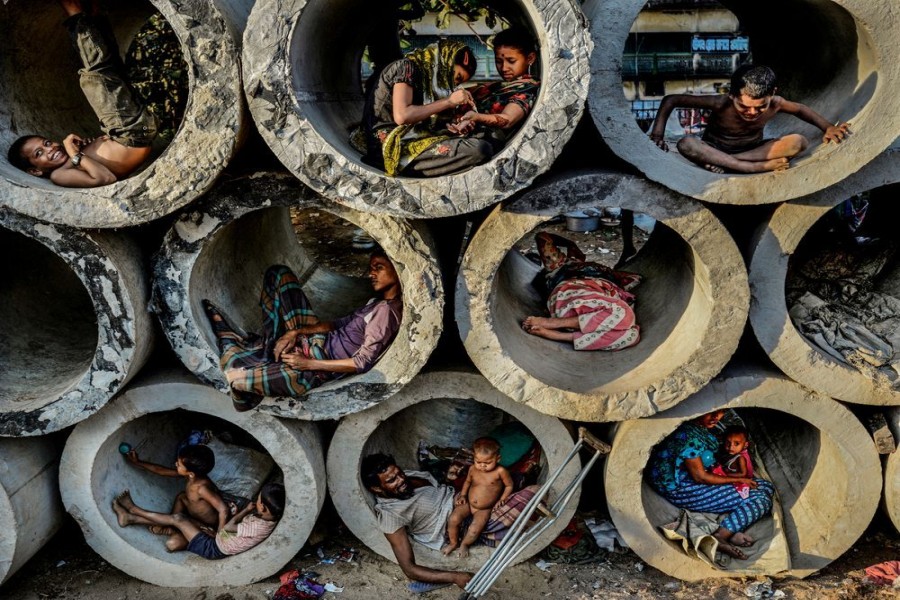

Contrary to the claims by previous regimes, the country's achievement in poverty reduction is still below the desired level. In sharp contrast to what people were asked to believe over the years, poverty rate is rather high, with at least one-fifth of the population on average living below the poverty line. According to the Household Income and Expenditure Survey (HIES) 2022, conducted by the Bangladesh Bureau of Statistics (BBS), the national poverty rate now stands at 20.3 per cent. Amidst a persistent high inflationary trend, an increasing number of people failing to make two ends meet with what they earn as daily wages are sliding below the poverty line. Obviously, the benefit of the so-called development is yet to trickle down to the lower strata of the population.
The ongoing disparity in the distribution of wealth among different regions does play a role in the slow progress of poverty reduction. In certain regions the percentage of people languishing in abject poverty is exceedingly high compared to that of others. According to the latest HIES, more than 63 per cent of people live below the upper poverty line in Dasar upazila of Madaripur district. The vast majority of people there are still deprived of what people in other areas have more or less achieved. Notably, Madaripur itself is the home to over 54 per cent of poor people, which is 2.5 times more than the national average and the highest among all the districts in the country. No one could know about these harsh realities from the generalised nationwide poverty rate. The disturbing regional disparity in wealth distribution becomes all the more evident from the fact that poverty rate in Noakhali district is 6.1 per cent against that of Madaripur.
Certain statistics of HIES make the issue of disparity on a regional scale further clear, Barishal division has the highest poverty rate of almost 27 per cent while Chattogram division has the lowest at 15 per cent. Rangpur, once marked as a red zone, brought down its poverty rate to 28 per cent in 2022 from 47 per cent in 2016, the situation in Barishal worsened to 32.1 per cent in 2022 from about 26.49 per cent in 2016. These facts show that the country's southern districts are behind other regions on the development trajectory. Similarly, disparity is also evident within the city: while the percentage of poor people in Paltan area is 1.0, it is as high as 19 in Kamrangirchar. The urban-rural divide also displays the same trend with the hunger rate of 16 per cent in cities and 20 per cent in rural areas.
Obviously, disparity in wealth distribution has been the main reason behind such a disturbing development. This is undoubtedly the result of skewed development and inequitable public resource allocation. Some areas are deprived of their due share of the development programmes taken annually. Variation in remittance inflow seems to have also been playing a big role in the state of poverty in different regions. Some of the areas have high percentage of workers who have migrated to foreign countries than others. Unfavourable topography, shortage of arable land, inadequate communication and marketing facilities as well as poor literacy rate and inadequate healthcare services may be other reasons behind such unequal development. Policymakers and development planners should pay attention to the unique features of the relatively backward regions on a priority basis and chalk out area-specific plans to reduce poverty there and turn those pockets of poverty into one of affluence. The country cannot achieve the desired level of development with a section of the population remaining behind others. The entire nation needs to go forward together.


 For all latest news, follow The Financial Express Google News channel.
For all latest news, follow The Financial Express Google News channel.